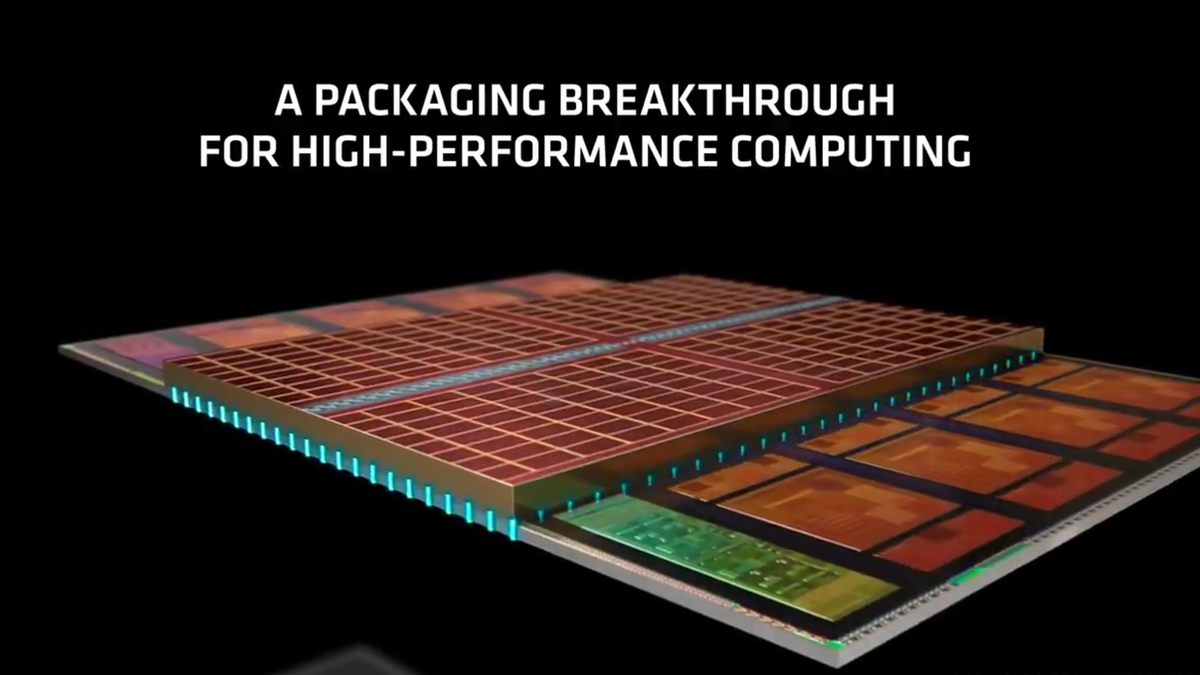
AMD has moved to trademark 3D V-Cache, the consumer-facing name for the company's stackable cache solution, with the U.S. Patents and Trademarks Office. The technology, which was jointly developed in partnership with TSMC, has so far only been announced in a CPU deployment, specifically the upcoming refresh of top tier offerings in AMD's Zen 3 lineup, as well as the 768 MB-toting Epyc Milan-X CPUs. However, AMD's trademark suggests that the technology may be adapted to other AMD products like GPUs.
The addition of 3D V-cache leads to a tripling of available L3 cache for the upcoming CPUs. Each 3D V-Cache chip atop a CCX offers an additional 64 MB of cache over the already-present 32 MB per CCX in Zen 3. AMD's RDNA 2 GPUs currently have up to 128MB of Infinity Cache, which has proved to be quite beneficial for GPUs that only have a 256-bit memory interface. Just imagine what they might do with double or triple the cache.
Keep in mind that patents and trademarks are usually designed to be as general as possible. Companies often attempt to cover all their bases for the initial application, so as to better insulate themselves from patent trolls and other IP violations. This is especially true for trademarks, which generally just attempt to cover all possible and imaginable places where that trademark might be employed.
Still, AMD's application does seem to heavily favor GPU iterations of the technology. There are 23 instances of "GPU" in the application, whereas "CPU" is only mentioned 12 times. AMD's trademark actually covers an entire range of technological applications besides CPUs and GPUs: SoCs, solid state drives, DRAM, DRAM controllers, and memory cards to name just some of the possibilities.
Not surprisingly, it seems just about everything is fair game for an added level of cache. "Hi, I'd like the cheeseburger, with a side of 3D V-Cache." Okay, maybe not everything.
Considering the emphasis AMD has put on its RDNA2 Infinity Cache, and how that investment turned out in terms of AMD's GPU efficiency and performance, it's only natural that AMD would be looking to expand 3D V-Cache applications to the GPU world. There are of course diminishing returns in solely increasing cache size. However, it does seem like a relatively simple way to add performance and improve on energy efficiency for a given GPU architecture, while doubling down on the "Infinity Cache" approach to GPU design.
We still haven't gotten our hands on working silicon that packs the technology, but AMD's 3D V-Cache has been announced to great fanfare. Designed as an additional pool of cache memory, 3D V-Cache takes advantage of advanced packaging technologies to link a sheet of SRAM cache to a particular chip, increasing the amount of available, close-to-metal memory. The idea is simple: keep as much information as you can as close to the processing units as possible, reducing both power consumption and expensive, latency-laden trips (comparatively) to RAM.
AMD expects its first iteration of 3D V-Cache to offer performance improvements of up to 15% for certain gaming workloads. It's specifically talked about several esports games, which tend to be more sensitive to cache sizes and run at higher fps. We're curious to see just how much a larger CPU L3 cache will help in other games. Intel's Broadwell CPUs back in the day could sometimes deliver significantly more performance in games than Haswell, mostly thanks to their on-package L4 cache, but a lot has changed since 2015.
You may be interested in:
>> Is a Chromebook worth replacing a Windows laptop?
>> Find out in detail the outstanding features of Google Pixel 4a
>> Top 7 best earbuds you should not miss
Related Posts:
>> Recognizing 12 Basic Body Shapes To Choose Better Clothes
>>Ranking the 10 most used smart technology devices
>> Top 5+ Best E-readers: Compact & Convenient Pen

0 Comments:
Post a Comment